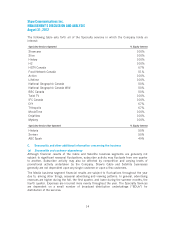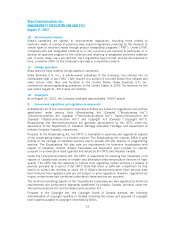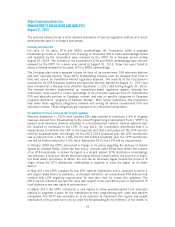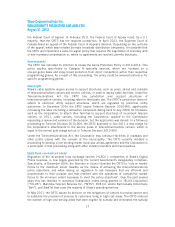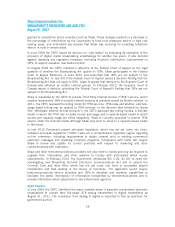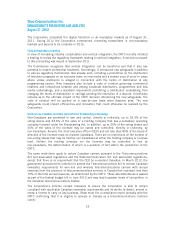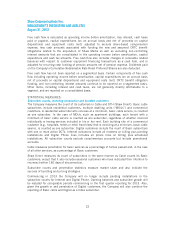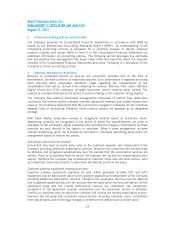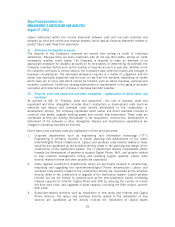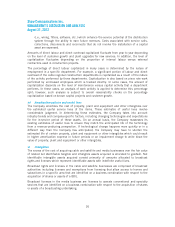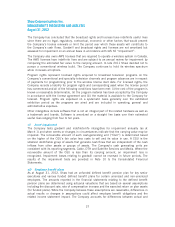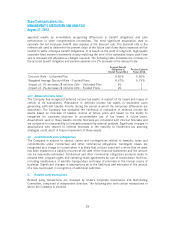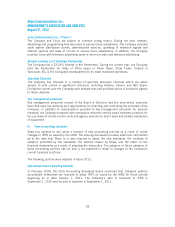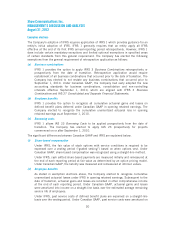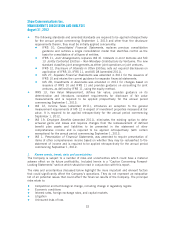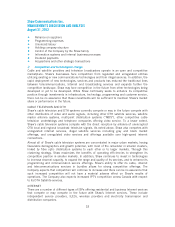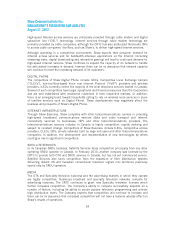Shaw 2012 Annual Report Download - page 28
Download and view the complete annual report
Please find page 28 of the 2012 Shaw annual report below. You can navigate through the pages in the report by either clicking on the pages listed below, or by using the keyword search tool below to find specific information within the annual report.Shaw Communications Inc.
MANAGEMENT’S DISCUSSION AND ANALYSIS
August 31, 2012
In conjunction with equipment revenue, the Company also incurs incremental direct costs
which include equipment and related installation costs. These direct costs cannot be separated
from the undelivered subscription service included in the multiple deliverable arrangement.
Under IAS 2 “Inventories”, these costs represent inventoriable costs and are deferred and
amortized over the period of two years, consistent with the recognition of the related equipment
revenue. The equipment and installation costs generally exceed the amounts received from
customers on the sale of equipment (the equipment is sold to the customer at a subsidized
price). The Company defers the entire cost of the equipment, including the subsidy portion, as
it has determined that this excess cost will be recovered from future subscription revenues and
that the investment by the customer in the equipment creates value through increased
retention.
Shaw Tracking equipment revenue and costs
Shaw Tracking equipment revenue is recognized over the period of the related service contract
for airtime, which is generally five years.
In conjunction with Shaw Tracking equipment revenue, the Company incurs incremental direct
costs which include equipment and related installation costs. These direct costs cannot be
separated from the undelivered tracking service included in the multiple deliverable
arrangement. Under IAS 2 “Inventories”, these costs represent inventoriable costs and are
deferred and amortized over the period of five years, consistent with the recognition of the
related tracking equipment revenue.
Shaw Business installation revenue and expenses
The Company also receives installation revenues in its Shaw Business operation on contracts
with commercial customers which are deferred and recognized as revenue on a straight-line
basis over the related service contract, generally spanning two to ten years. Direct and
incremental costs associated with the service contract, in an amount not exceeding the upfront
installation revenue, are deferred and recognized as an operating expense on a straight-line
basis over the same period.
Subscriber connection and installation costs
The costs of physically connecting a new home are capitalized as part of the Company’s
distribution system as the service potential of the distribution system is enhanced by the ability
to generate future subscriber revenue. Costs of disconnections are expensed as incurred as the
activity does not generate future revenue.
Income statement classification
The Company distinguishes amortization of deferred equipment revenue and deferred
equipment costs from the revenue and expenses recognized from ongoing service activities on
its income statement. Equipment revenue and costs are deferred and recognized over the
anticipated term of the related future revenue (i.e., the monthly service revenue) with the
period of recognition spanning two to five years. As a result, the amortization of deferred
equipment revenue and deferred equipment costs are non-cash items on the income statement,
similar to the Company’s amortization of deferred IRU revenue, which the Company also
segregates from ongoing revenue. Further, within the lifecycle of a customer relationship, the
customer generally purchases customer premise equipment at the commencement of the
customer relationship, whereas the subscription revenue represents a continuous revenue
stream throughout that customer relationship. Therefore, the segregated presentation provides a
24


